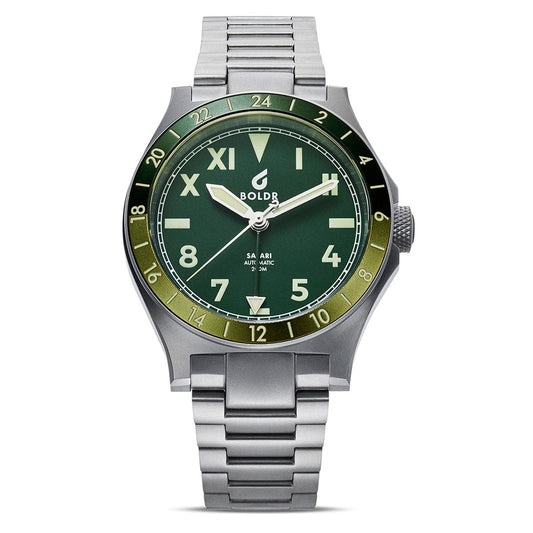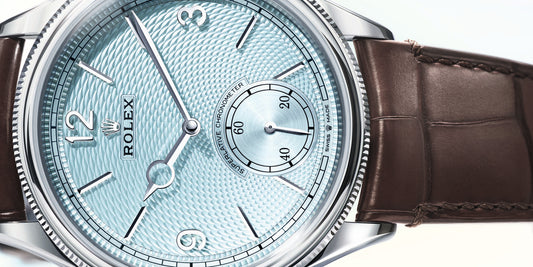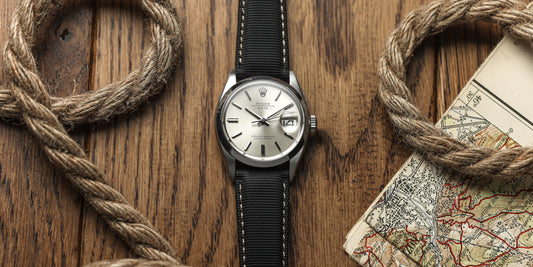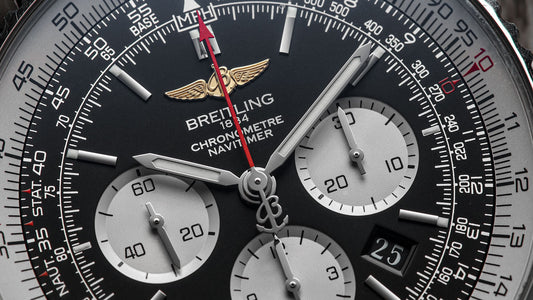The time-zone hopping travellers’ timepiece, the GMT watch has become a staple for many watch connoisseurs, especially those that find themselves jumping in and out of planes on the regular. While many simply rely on their smartphones to keep track of the time, there’s something to be said for the few of us that still appreciate the timeless elegance of a GMT watch and its ability to track multiple time zones at once.
 Tudor Black Bay GMT - Credit WatchGecko
Tudor Black Bay GMT - Credit WatchGecko
GMT, short for Greenwich Mean Time, is the time at the Greenwich Meridian, which is located at the Royal Observatory in Greenwich, London. Historically, GMT was established as a standard reference time for the world and was used as the basis for calculating time in different regions. However, today, GMT has been largely replaced by the standard time reference Coordinated Universal Time (UTC) which takes into account the Earth's rotation variations. Technically GMT is now just a time zone, but it has also stuck around to label those brilliant timepieces that come with an extra hour hand – and, more often than not – a 24-hour rotating bezel.
History of the GMT Watch
 Rolex GMT Master II - Credit WatchGecko
Rolex GMT Master II - Credit WatchGecko
£650.00

Following World War II and the introduction of commercial air travel, everyday men and women found themselves more regularly hopping from one time zone to another. This, of course, opened up the opportunity for watch brands to create an innovative timepiece that could keep track of both a traveller’s home time and current location.
Glycine is widely credited as the first watchmaker to launch a GMT watch, unveiling the Glycine Airman in 1953. It is noted as the first watch to display two time zones simultaneously using a 24-hour bezel that could be positioned with the hour hand for the second time zone. The Glycine Airman was initially created at the request of British pilot and commander Chat Brown but was quickly made available to the general public due to its popularity.
 Farer Lander GMT - Credit WatchGecko
Farer Lander GMT - Credit WatchGecko
While the Glycine Airman was a huge success, it wasn’t until Rolex launched its inaugural GMT-Master watch that the GMT concept was truly commercialized. The Rolex GMT-Master was launched in 1954 for Pan Am pilots, combining a conventional hours and minutes display with a third arrow-tipped hand and a two-toned 24-hour bezel. The use of both a GMT hand and a 24-hour bezel allowed travelers to display up to three time zones at once.
What makes a GMT Watch?
GMT watches can come in all shapes and sizes, but essentially, a GMT watch is a timepiece that displays more than one-time zone. This can be with a fourth central hand, often large, colored, and arrow-tipped, which circles the dial alongside the conventional hours, minutes, and seconds. It can also be through a 24-hour bezel or on a completely separate subsidiary dial. As long as you have a classic 12-hour display for the local time alongside an additional 24-hour function to reveal home time, then you’ve got yourself a GMT watch.
 Boldr Venture GMT - Credit WatchGecko
Boldr Venture GMT - Credit WatchGecko
- Regular price
- £279.00
- Regular price
-
£469.00 - Sale price
- £279.00
- Unit price
- per

How do GMT Watches Work?
GMT watches typically work thanks to one or two additional features that allow the watch to display two or more time zones at once. This is done by using an additional center hand, a rotating 24-hour bezel, or an additional subsidiary dial. But how do each of these components contribute to its functionality?
The most common feature of a GMT watch is an extra 24-hour hand which works alongside the traditional central hardware for hours, minutes, and seconds. The hand is usually shaped or colored differently for easy distinction and moves at the same pace as the regular hour hand, completing one full rotation of the dial every 12 hours. While the regular hour and minutes are set to the wearer’s local time, the GMT hand is positioned to the hour of their home time. This way, the dial presents two time zones at once.
 Boldr Venture GMT - Credit WatchGecko
Boldr Venture GMT - Credit WatchGecko
Another feature often seen on a GMT watch is a rotating bezel. The bezel will be printed with a 24-hour scale around its circumference, which can be aligned with the regular hour hand to display another time zone. Sometimes, the bezel will be two-toned to separate the night hours from the day hours. It’s rare for GMT watches nowadays not to have both a central GMT hand and a rotating bezel, which together displays three time zones at once. Finally, some GMT watches have a separate 24-hour subsidiary dial on the display to showcase its additional time zone.
How to set your GMT watch
 Tudor GMT - Credit WatchGecko
Tudor GMT - Credit WatchGecko
Setting the GMT complication can vary depending on the timepiece you have, but typically, the central GMT hand is manipulated the same way you’d change the date on a time-only watch. Pulling out the crown and winding it one way will advance the date, and rotating it the opposite way will move the GMT hand. This is ideal since you do not have to disturb the current time to set the GMT. This type of GMT watches, where the 24-hour hand is set independently to the other hands, is sometimes called an “Office” or “Caller” GMT. It is named as such because they are typically worn by less frequent travelers that simply need to keep track of another time zone elsewhere.
Another type of GMT watch is the “True” GMT which is typically used by regular time zone-hoppers who need to adjust their watches regularly. “True” GMT watches still have a traditional central GMT hand, but rather than this being independent, they have an independent hour hand. In this instance, the local hour hand is adjusted independently in one-hour increments, typically by pulling the crown out to its second position. The third position, on the other hand, moves all three hands together, including the local hours, local minutes, and 24-hour hand. The ease of changing the local hours is ideal for those that move from one time zone to another on the regular.
 Farer Lander GMT - Credit WatchGecko
Farer Lander GMT - Credit WatchGecko
So there you have it, a brief introduction to GMT watches and how they work. Now you know all there is to know, will you go out and purchase a GMT watch for yourself? Or do you already own one, and if so, do you have a favorite? Let us know in the comments below!




















